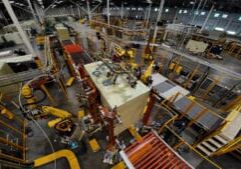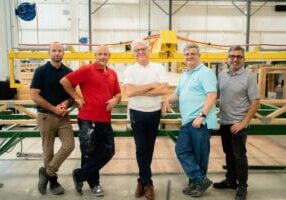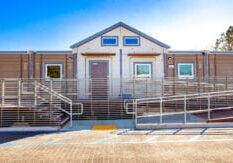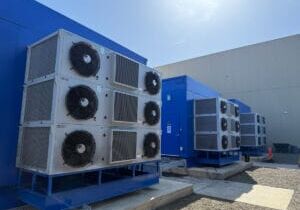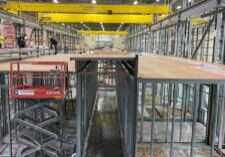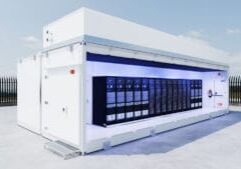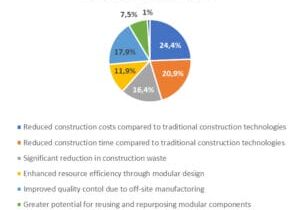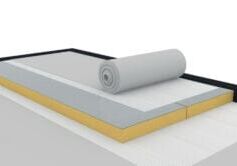RainStick: The Art of Sustainable Showering
Water and energy conservation are important in today’s climate of finite resources and expanding populations. A recently developed product promises to provide homeowners with major savings in both energy and water. It’s called RainStick, and one of its founders says users can reduce their water consumption by almost a swimming pool's worth over the course of a year. With a payback period of just over five years, modular builders focused on sustainability are taking note.
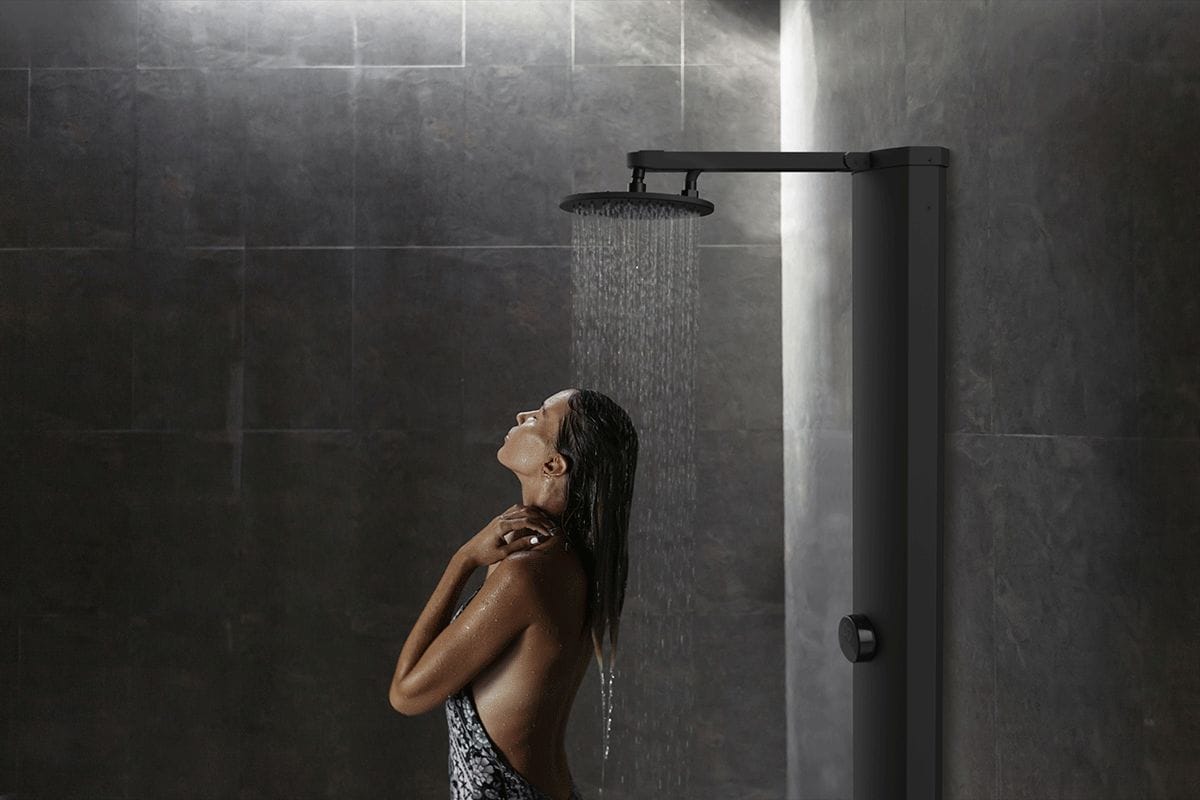
RainStick’s journey begins in the Okanagan Valley, Canada’s only desert region. Co-founders Sean and Alisha McFetridge both grew up with the realities of living in a desert. Both became convinced that something needed to be done to reduce water use in the home. Sean’s experience as a lifeguard at a waterpark when he was a teenager began his education in resource management. He was in charge of water maintenance at the park and ensured that the proper chemicals were present to keep customers safe and healthy. He later spent years working at Home Depot as their national energy manager.
Alisha, the current CEO and co-founder of RainStick, paired her tech background with a passion for water conservation cultivated during her international travels to places like the Masai Mara in Kenya.
Conserving Our Most Precious Resource
According to the EPA, the average American family of four uses 400 gallons of water per day. On average, approximately 70 percent of that water is used indoors, with the bathroom being the largest consumer. The average American uses 70 gallons per day for indoor use. The McFetridge’s have a goal to reduce that to 13 gallons of water per person per day. So, they decided to tackle one of the biggest water wasters, the shower. The average shower, at 8-10 minutes, uses 16-21 gallons of water.
RainStick began in 2019. In its current iteration, version 11, it’s capable of reducing both water and energy use by 80% each while providing double the water pressure that’s found in today’s low-flow showerheads. It does this through recirculation and real time water treatment.
The device is mounted on the outside of the wall of the shower. It’s connected to the potable water supply and drain, but temporarily diverts wastewater to a three-stage treatment process before recirculating it. As water goes down the drain, it is redirected to a reservoir that connects to the drain P-trap, similar to a linear drain. The company recently introduced a custom shower base that allows installation to be completed in one day.

The drain water is treated and recirculated six times before it is finally released into the home’s sewer system. In recirculate mode, the shower uses just 0.5 gallons per minute while giving users the experience of three gallons per minute (a low-flow shower provides 2.1 gallons per minute). It also has the option of a more traditional shower experience with all fresh water from the supply, but the showerhead flow is reduced to 1.8 gallons per minute.
The three-stage cleaning process happens in real time and consists of a high intensity UV LED light treatment, a micron screen that removes anything larger than a grain of sand, and the constant introduction of a small amount of fresh water throughout the process. Fresh water helps maintain temperature and ensures that the entire water stream is replaced on a regular basis. The only maintenance required is to remove and clean the micron filter twice a month and top off the cleaning solution in the appliance once per month.
The system can be connected to a smart home hub, if desired. Homeowners can then track water and energy savings through sensors embedded in the appliance. Alisha hopes that more smart home users will take interest in their water use, not just energy. “It’s typically net zero homeowners who are really focused on the energy envelope and haven’t made space for water conservation and net zero water technology. I would say water tech is about ten years behind energy tech.”
The appliance requires a GFCI connection at the back of the shower and a drain that is slightly higher than in a traditional shower. With the new shower pan and upcoming product offerings, installation will be even easier.
Gray water code requirements are not an issue with RainStick. “The nice thing about our technology is that it’s not deemed gray water. It’s only gray water once it leaves the sanitary drain. We are never holding water in between sessions. No one uses the same water, it’s just point of use recirculating up to six times for the duration of your shower, and then we’re cleaning that water in real time.”
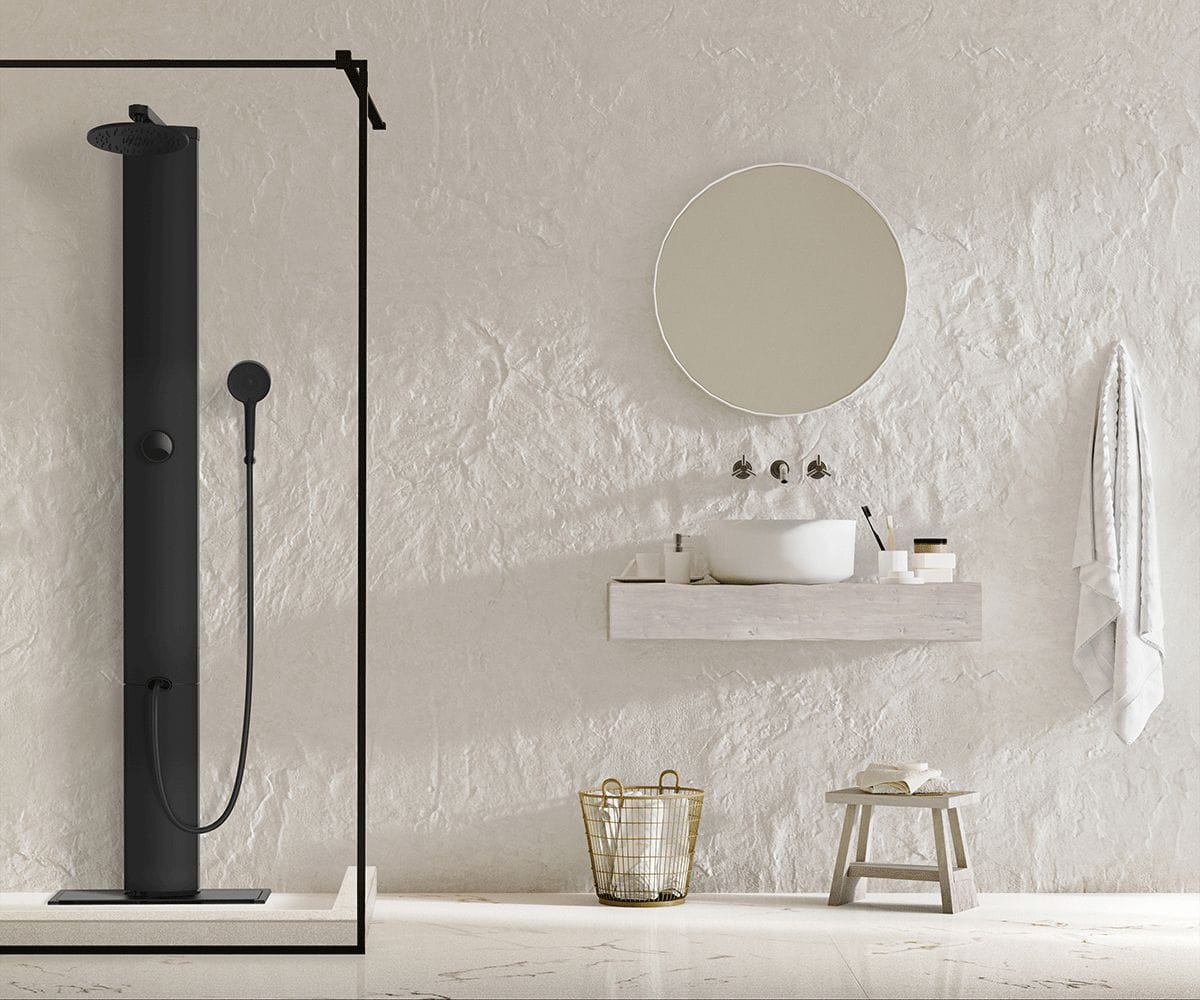
Conserving Our Most Precious Resource
According to the EPA, the average American family of four uses 400 gallons of water per day. On average, approximately 70 percent of that water is used indoors, with the bathroom being the largest consumer. The average American uses 70 gallons per day for indoor use. The McFetridge’s have a goal to reduce that to 13 gallons of water per person per day. So, they decided to tackle one of the biggest water wasters, the shower. The average shower, at 8-10 minutes, uses 16-21 gallons of water.
RainStick began in 2019. In its current iteration, version 11, it’s capable of reducing both water and energy use by 80% each while providing double the water pressure that’s found in today’s low-flow showerheads. It does this through recirculation and real time water treatment.
The device is mounted on the outside of the wall of the shower. It’s connected to the potable water supply and drain, but temporarily diverts wastewater to a three-stage treatment process before recirculating it. As water goes down the drain, it is redirected to a reservoir that connects to the drain P-trap, similar to a linear drain. The company recently introduced a custom shower base that allows installation to be completed in one day.
A Work in Progress
The RainStick’s award-winning design is certainly turning heads. They’ve won best innovation awards at the Consumer Electronics Show in the smart home category, a gold award at the Kitchen and Bath Industry Show, and a best water technology award at the BlueTech conference.
The design has gone through many changes, starting as a cardboard construction on a plywood base. As water treatment technology has improved, so has the effectiveness of the device. The team’s goal has always been to ensure that it was easy to use and required very little maintenance, while saving as much energy as possible. The phase one prototype peaked at 60% energy savings, causing them to eliminate the heater that was provided with that version of the system. They also removed the heater to eliminate the chance that something could go wrong with the system. Alisha says, “We worked hard to make sure that the technology is really straightforward and low maintenance. You don’t have to constantly clean little sensors.”
RainStick is intended for homeowners or companies that are interested in building sustainable structures, particularly net zero, or those looking to conserve water either by necessity or because they want to do their part to save this precious resource. “We’re starting to align with builders, homeowners, architects, and designers who are building for the net zero future,” Alisha says.
Primed for Use in Modular Construction
It’s perfectly suited for modular designers and manufacturers because “it allows you to build essentially anywhere. You don’t need to worry so much about hooking up to traditional plumbing capacity.” With many looking to establish homes off-grid, which often means with limited water supply, the RainStick offers an easy way to save significantly on water and energy use. Alisha says the system can save as much as a whole home gray water reuse system, without the high cost. In addition, the system is easy to install and with the new shower base, installation only takes a day.
The filtration and cleaning system is very effective, often providing more hygienic water than a shower today.
Alisha sees RainStick as an additional selling point for manufacturers that are already creating sustainable structures. “It’s something that modular builders can celebrate. They can say, ‘Check it out, we’ve utilized this technology that doesn’t just save water and energy, but it’s also going to save you an average of $1,000 per year in California due to the water and energy savings.’”
The next step for RainStick is a model designed specifically for modular builders, which will be officially announced in early 2024. It will allow manufacturers to easily integrate RainStick into their manufacturing process and put the system behind the wall. The upcoming model will be more cost conscious and come in a variety of styles. They are also looking to expand the line into other bathroom fixtures.
RainStick is available for consumers to purchase both online and in showrooms in Vancouver, Canada and a few in the Bay Area of California. They also have upcoming showrooms in New York and Toronto, Canada. Homebuilders or modular manufacturers can qualify for volume discounts. Alisha says their goal in the next three years is to partner with every aligned modular manufacturer in North America. They want to spread the word about their product and the need
About the Author: Dawn Killough is a freelance construction writer with over 25 years of experience working with construction companies, subcontractors and general contractors. Her published work can be found at dkilloughwriter.com.
More from Modular Advantage
Resia: Breaking All the Rules
Resia Manufacturing, a division of U.S.-based Resia, is now offering prefabricated bathroom and kitchen components to industry partners. Its hybrid fabrication facility produces more precise bathroom and kitchen components (modules) faster and at lower cost than traditional construction. Here’s how Resia Manufacturing does it.
How LINQ Modular Innovates to Bring Modular To The Market in the UAE and Beyond
LINQ Modular, with an office and three manufacturing facilities in Dubai, is a modular firm based in United Arab Emirates. The company is on a mission: to break open the housing and construction markets in the Gulf Cooperation Council (GCC) area with modular.
ModMax: Redefining Modular Construction with Confidence and Precision
ModMax was born out of frustration—frustration with five persistent pain points in modular construction: Permitting bottlenecks. Production delays. Rigid designs. Disconnect between “the office” and the field. Lack of transparency and communication.
LifeArk: Disaster-Resilient Housing from Recycled Plastic and 100-year-old Technology
Wee compares LifeArk’s housing units to Yeti coolers, as they are built similarly. Each component takes 15 to 20 minutes to manufacture, has an R-value of 40, and includes molded slots and chases for wiring, plumbing, fire sprinklers, and other utilities.
Building the Future of Modular Edge Infrastructure
The edge data center market is expanding rapidly, driven by the surge in AI workloads, IoT adoption, and the need for localized compute power. In these environments, sustainability, scalability, and reliability are non-negotiable. Cooling is among the most complex challenges for operators—and one of the most decisive factors in long-term success.
Accelerating Light-Gauge Steel Construction: A Semi-Automated Digital Workflow for Off-Site Projects
For construction professionals, the message is clear. By adopting semi-automation and digitalization, companies can deliver projects faster, more accurately, and more profitably, while also building stronger collaboration across teams. The approach is not about replacing people with machines, but about empowering people with better tools and processes.
Why Modular Data Centers Are Gaining Momentum
Artificial intelligence, high-performance computing, and edge applications push the limits of traditional “stick-built” data centers. They take years build, often struggle with high density workloads, and aren’t optimized for deployments near end users. Modular data center platforms are purpose-built to address these challenges, offering flexibility and scalability to adapt to evolving technologies, while opening new opportunities for the modular construction industry.
Supply Chain Innovation in Action: 5 Habits Every Modular Leader Should Practice
By applying these principles to supply chain practices — collaborative planning, strategic procurement, scenario modeling, digital tools, and transparent forecasting — construction leaders can build value chains that are not just efficient and agile, but truly innovative.
Exploring the Role of Modular Integrated Construction (MiC) in Advancing Circular City Principles – A Survey of Stakeholder Perspectives
The survey findings highlight the significant potential of Modular integrated Construction (MiC) in advancing the development of circular cities. By reducing costs, accelerating construction timelines, and minimizing waste generation, MiC offers a promising approach to sustainable urban development.
The Use of MS POLYMER™-Based Sealants and Adhesives in Modular Building
These products combine flexibility and elastic recovery with excellent adhesion to different substrates and have already shown their usefulness in traditional construction. Now it’s time for them to be put to use in the modular construction industry.

